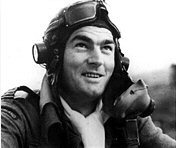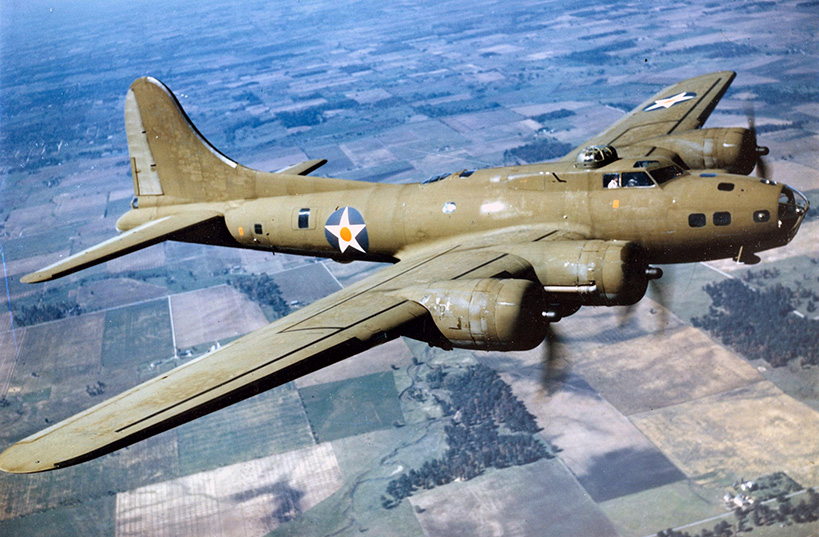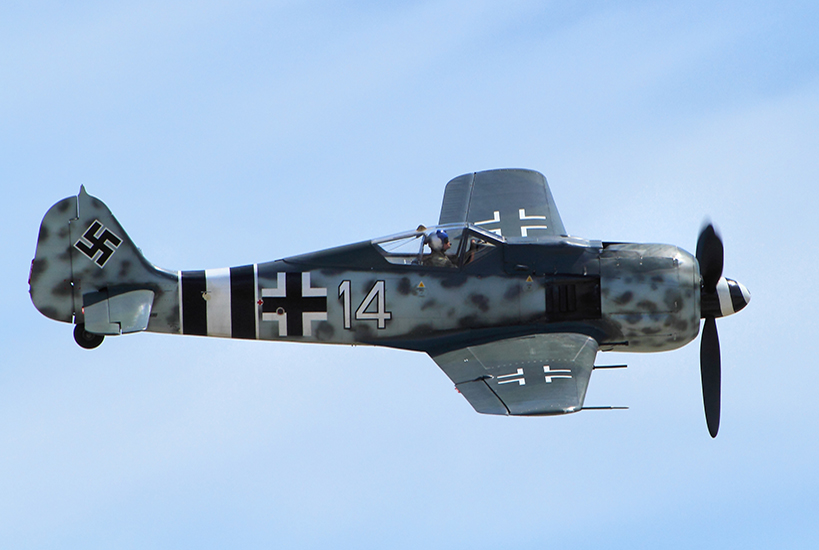Mackie, Evan Dall "Rosie"
- Date of birth:
- October 31st, 1917 (Waihi, New Zeeland)
- Date of death:
- April 28th, 1986 (Tauranga, New Zeeland)
- Nationality:
- New Zealander
Biography
Evan Dail Mackie was born October 31st, 1917, in Waihi, New Zealand. After finishing the Waihi School of Mines, he became an electrician in the country's largest gold mine. January 19th, 1941, he joined the Royal New Zealand Air Force (RNZAF) as 'aircrew in training'. He learned to fly in a De Havilland Tiger Moth biplane and completed his training in Canada flying a North American Harvard. Once in England, he joined 485 New Zealand Spitfire Squadron in December 1941 as Pilot-Officer. March 26th, he shared the destruction of a Messerschmitt Bf 109. A month later, the squadron escorted a group of Hawker Hurricanes -Hurribombers- to Calais and Mackie probably destroyed a Focke-Wulf Fw-190. While heading home at low level, his port wing was hit by flak near the French coast but despite the damage to his aircraft, he returned to base safely.
Early 1943, as Flying-officer, he was transferred to North-Africa to join 243 Sq. in Algeria flying Spitfires Mk V-c. Shortly after he was given command of a flight. In this theatre, his number of victories started to increase. In April and early May, he shot down two Junkers Ju-87 Stukas and five Messerschmitt Bf-109s. He shared another victory over a BF-109 and a damaged Focke-Wulf Fw-190. In this period, Mackie was awarded the Distinguished Flying Cross.
June 1943, the squadron was transferred to Malta to take part in the imminent invasion of Sicily. Mackie was promoted to Acting Sq.Ldr and assumed command of the unit. July 4th, 1943, his unit was detailed to provide air cover to a formation of Boeing B-17 Flying Fortresses that was to bomb the city of Catania, Sicily. As the bombers left their target, six Bf-109's suddenly appeared. Although his guns were not functioning properly, he managed to set one of the opponents on fire but was subsequently assaulted himself. He succeede to escape with a dive to sea level and flew back to Malta. On his way home, he attacked a sailing ship south of the city of Augusta. Despite being fired upon by shorebatteries, he returned to base safely.
July 5th, he was victoriouis again by downing a Messerschmitt Bf-109 and during that period, more victories followed. July 12th, he probably downed an Italian Macchi 202 and the next day shot three Junkers Ju-87's. Mackie's operational tour ended with the capture of the Sicilian airfields. He was awarded a bar to his DFC and in November was given command of 92 Sq. in Italy. During this period he shot down another four enemy aircraft, raising his tally to 16 up to February 1944.
Prior to his appointment as supernumerary Sq.Ldr of 274 Sq. on the continent, Mackie served as Senior Stafofficer Training with Air Defence in Great Britain for six months. 274 Sq. was stationed at Volkel air base in the Netherlands, flying the Hawker Tempest. December 24th, 1944, over Malmedy in the Belgian Ardennes, he downed a Focke-Wulf Fw-190 that had just shot down two Canadian Hawker Typhoon fighterbombers. In all probability, Mackie had shot the German Ace (28 victories) Hauptmann Wolfgang Kosse.
Early January 1945, he was given command of 80 Sq., also stationed at Volkel. During the subsequent period he downed a Bf-109 on January 23rd, a Fw-190 on March 7th near Hannover and two Arado Ar-96's trainers on April 9th. April 15th, he shared the destruction of another Fw-190. At the end of January 1945, he was awarded the Distinguished Service Order and in April, he was promoted to Wing Commander. April 19th, he was appointed commander of 122 Wing, a post he held until September 1945.
May 4th, 1945, he led a formation of eight Hawker Tempest fighters of 486 Sq. to an area around Kiel-Haderslev. The squadron claimed the destruction of three Fieseler Fi-156 Storch aircraft on the ground. Mackie ended the war with 21 victories confirmed and one shared. In addittion to his British decorations, he was also awarded the US Distinguished Flying Cross.
Back in England, he married a WAAF sergeant, Marjorie Dear and completed a staff course at the RAF Staff College. The RAF, as well as the RNZAF asked him to stay on but he refused. He did not feel like playing the war games usually played at staff school and no longer saw any purpose in them. November 10th, 1945, he made his last flight as pilot-in-command of a Percival Proctor and returned to New Zealand in 1946. He took up his former job and retired as Chief Inspector with the Tauranga Electric Power Board in 1978.
He died April 28th, 1986 in Tauranga hospital at the age of 68.
Do you have more information about this person? Inform us!
- Period:
- Second World War (1939-1945)
- Rank:
- Flying Officer
- Unit:
- No. 243 Squadron, Royal Air Force
- Awarded on:
- May 21st, 1943
"In operations in North Africa, this officer has displayed skilful leadership and great tenacity. He has destroyed 5 enemy aircraft, 4 of them within a period of eleven days in April, 1943. His courageous example has proved inspiring."
- Period:
- Second World War (1939-1945)
- Rank:
- Acting Squadron Leader
- Unit:
- No. 243 Squadron, Royal Air Force
- Awarded on:
- September 28th, 1943
"This officer, who commands his squadron, has shown himself to be an exceptional fighter pilot, whose toe fighting spirit, personal courage and determination have been an inspiring example to all. He has destroyed twelve enemy aircraft."
Received as a bar for on the ribbon of the first DFC.
- Period:
- Second World War (1939-1945)
- Rank:
- Squadron Leader
- Unit:
- No. 80 Squadron, Royal Air Force
- Awarded on:
- May 8th, 1945
London Gazette dated the 4th of May, 1945.
- Period:
- Second World War (1939-1945)
Sources
- Photo: New Zealand Fighter Pilots Museum
- - Second Supplement to The London Gazette Issue 36022 published on the 18 May 1943
- Third Supplement to The London Gazette Issue 36187 published on the 24 September 1943
- Flight GLobal - Archive
- The Hawker Tempest Page
- Waihi Museum
- New Zealand Fighter Pilots Museum







